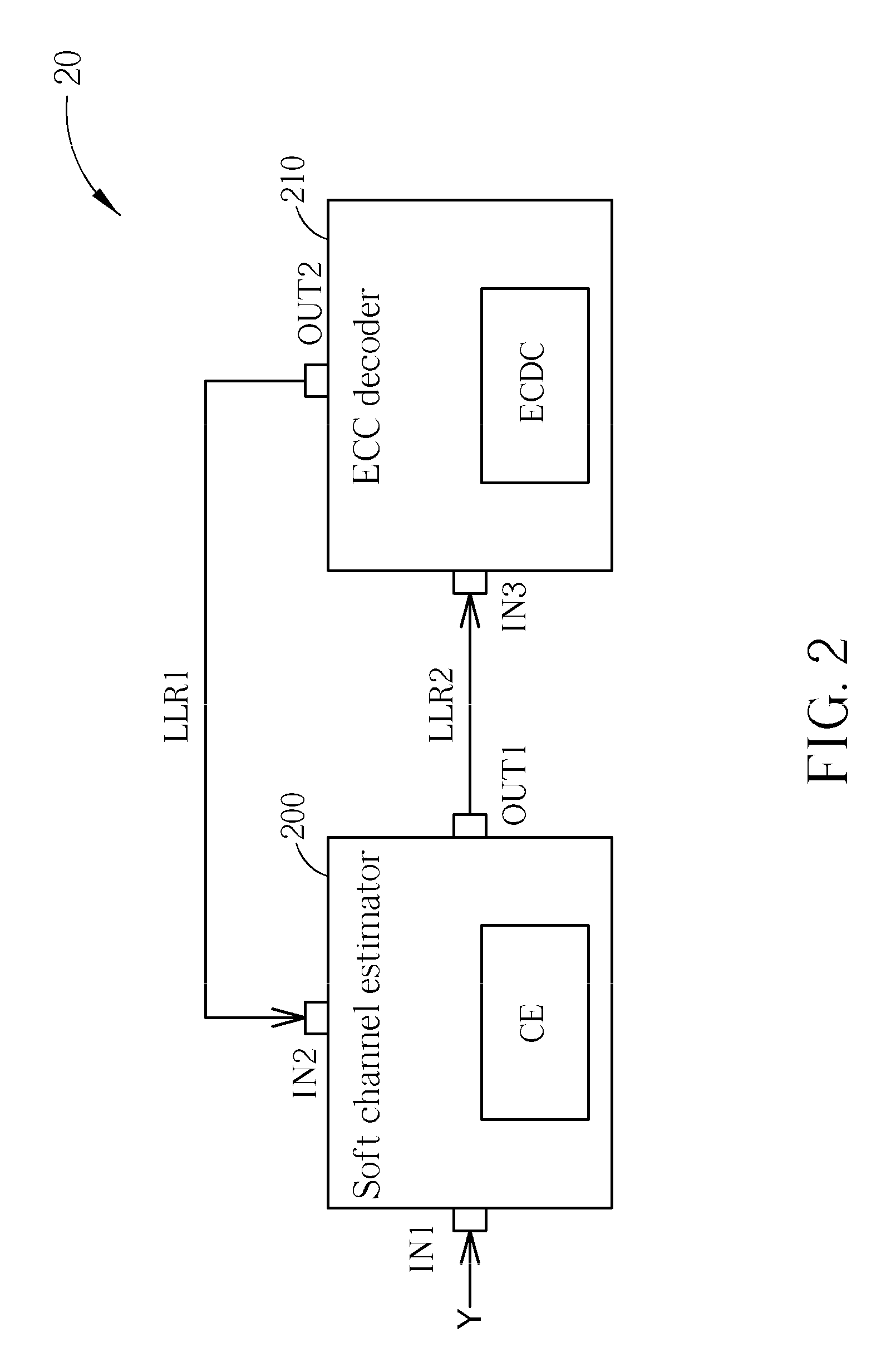Iterative Signal Receiving Method and Related Iterative Receiver
a technology of iterative signal and receiving method, applied in the field of iterative signal receiving method and related device, can solve the problems of channel estimation, signal distortion, and does not specify any standard approach or criteria about compatibility of channel estimation techniques, and achieve the effect of cos
- Summary
- Abstract
- Description
- Claims
- Application Information
AI Technical Summary
Benefits of technology
Problems solved by technology
Method used
Image
Examples
Embodiment Construction
[0017]Please refer to FIG. 1, which is a schematic diagram of an iterative signal receiving process 10 according to an embodiment of the present invention. The iterative signal receiving process 10 is utilized in a receiver of a wireless communication system and includes the following steps:
[0018]Step 100: Start.
[0019]Step 102: According to first log-likelihood ratio (LLR) data, utilize a channel estimation (CE) process to perform channel estimation for a received signal to generate second LLR data.
[0020]Step 104: Generate the first LLR data according to an ECC decoding algorithm and the second LLR data.
[0021]Step 106: End.
[0022]In the iterative signal receiving process 10, Step 102 is utilized for realizing channel estimation, and the ECC decoding algorithm in Step 104 is a soft input soft output (SISO) algorithm. Both of the first and second LLR data is soft information. According to the iterative signal receiving process 10, the first LLR data is used as “a priori” information co...
PUM
 Login to View More
Login to View More Abstract
Description
Claims
Application Information
 Login to View More
Login to View More - R&D
- Intellectual Property
- Life Sciences
- Materials
- Tech Scout
- Unparalleled Data Quality
- Higher Quality Content
- 60% Fewer Hallucinations
Browse by: Latest US Patents, China's latest patents, Technical Efficacy Thesaurus, Application Domain, Technology Topic, Popular Technical Reports.
© 2025 PatSnap. All rights reserved.Legal|Privacy policy|Modern Slavery Act Transparency Statement|Sitemap|About US| Contact US: help@patsnap.com



